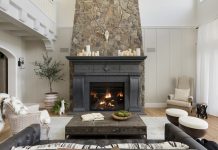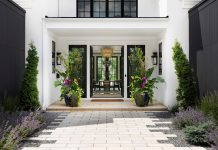As we move into spring and start thinking about pruning our outdoor spaces, homeowners should be aware of the current infestation in many of Twin Cities neighborhoods. Many people have seen the destruction emerald ash borers (EAB) have caused to ash trees in St. Paul, or noticed the think bands around trees warning about EAB. St. Paul’s parks and recreation department reports 95% of the city has been invested, with more than 10,000 trees removed to date. The infestation has spread to other Twin Cities suburbs, including Maple Grove, Eden Prairie, Prior Lake, Hastings, Forest Lake, and many cities in between. County quarantines have been put into place to slow the spread of EAB to other areas.
Fortunately, residents can help contain the problem by treating or removing the trees on their own properties. We spoke with local arborist Travis MacDonald from Davey Tree to help homeowners learn their options for treatment or removal of infested ash trees, as well as the best trees for replacement.

How can a homeowner treat for EAB?
“There are multiple treatment options [including soil injection, trunk injection, bark spray, and canopy spray] to protect your trees from EAB—and they’re incredibly effective. Without preventative care, infested trees may die in as little as three years and need to be removed to avoid a safety problem. Start with a free arborist consultation to determine if EAB is present and determine suitable management options. If your tree is deemed a good candidate for preservation, the EAB treatment must be applied at the right time, in the right way, by a certified applicator. If that happens, the effectiveness of EAB treatment is 85 to 95 percent. Plus, treating an infested tree is often much less expensive than replacing it.”
How can homeowners identify infested ash trees?
“Most people simply don’t know if they have ash trees, so that’s always where I have them start. Get out in your yard and see if you have an ash tree. You can identify an ash tree by looking at the bark, leaves, and branches—ash have a diamond pattern in the bark; five to nine slender, stand-alone leaflets on each leaf stem; and the branches are commonly symmetrical, meaning they will be paired with another branch on the opposite side of the limb.
Then, if you do, look for EAB symptoms, including increased woodpecker activity, chewing damage on edges of leaves, D-shaped holes chewed through the bark by emerging adults, bark splitting or S-shaped tunnels beneath the bark, canopy dieback that typically begins in the top one-third of the canopy, multiple sprouts of new growth at the trunk, and missing buds on the outer limbs of the trees. Frankly, even if your ash tree still looks healthy, get it inspected because EAB is in our region.”
What time of year do problems appear?
“Adult EAB are most active during mid to late summer and fall, tunneling into the trees they feed. Many new infestations are found in late winter when increased woodpecker activity can be seen on the trunks and branches.”
Any tips if you must remove a tree?
“Removing your tree is always a tough thing to do. But once you know your tree must come down, act fast to reduce risk. And be sure to have a certified arborist who has insurance remove the tree. Then, get planting! Replace your tree with different tree species in and around your property. That way if one species suffers from insect or disease issues, your entire landscape won’t be wiped out.”
What trees do you suggest for replacement?
“The top 10 large-canopied trees Davey Tree recommends as great replacements for ash in the Twin Cities include: catalpa, ginkgo, buckeye, thornless honeylocust, elm hybrids, Kentucky coffeetree, hackberry, river birch, sycamore, and bur oak. These are not the only suitable species to replace ash trees. There are other excellent native and non-native shade and ornamental trees for the Twin Cities. Your local arborist can help you select the right tree for the right spot.”




















